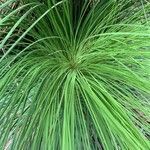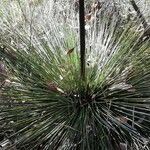A small tree. It grows 0.3-2 m tall. It spreads 60 cm-1 m wide. It has a large round crown of long thin leaves. They are grass like. The flowers occur closely packed along a long spike. The flowers are white. Dead flower spikes may stay on the tree for years.


